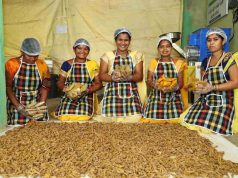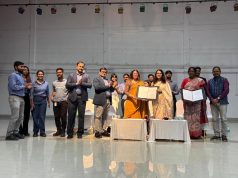Vedanta CSR is reviving Dhokra art in Odisha and Chhattisgarh
Vedanta, India’s largest producer of aluminium and its value-added products, is reviving traditional artforms like Dhokra, mural and tribal paintings in the regions where it operates.
On World Art Day celebrated on 15th April 2021, Vedanta launched advanced product design training for artisans of Dhokra, a beautiful metalworking artform with origins dating back to the Indus Valley civilization, in Lanjigarh, Odisha. The company also organised an exhibition and competition of tribal arts for local artists to encourage adoption of arts & craft as a means of sustainable livelihood in the region.
Ajay Kapur, CEO – Aluminium & Power Business and Managing Director – Commercial at Vedanta Ltd., says, “These art forms are a cultural heritage of our nation. We strive to patronize these indigenous art forms and nurture the creative potential of the rural artisans which remains unexplored with the mainstream world. CSR of Vedanta strives to enable communities in, around and far beyond the areas where it operates, to become empowered and self-reliant participants in the economic progress of the country. Our endeavours have brought not just recognition for the Dhokra artisans of Kankeri but also created a new market for them, resulting in more business and increased household income.”
The village of Kankeri, nestled deep within the forests of Kalahandi district in Odisha, is home to artisans skilled in the ancient metalworking art form of Dhokra, which has been a part of India’s rich handicraft repertoire for nearly 4000 years. This skill that has been handed down to them for generations, was limited to making rudimentary trinkets for their own use and for selling in the nearby village markets, which was not enough to make their ends meet.
Looking at the potential of Kankeri village becoming a vibrant hub of Dhokra, Vedanta organized professional training to keep up with contemporary design trends and produce commercially viable sculptures and art pieces that would have immense market value. The company provided the initial seed capital for procuring metal and other raw material and helped organize the first exhibition for them to get better prices for their craft.
After initial efforts started bearing fruits, Vedanta helped the artisan community create a raw material bank that would enable them to work seamlessly, open a Self Help Group bank account to provide adequate financial support, assist each of the households to open bank accounts where they can keep their hard-earned money and earn interest on their deposit, organize an artisan’s card in collaboration with the Government of Odisha that would give the artisans of Kankeri village public recognition and also access to government-held exhibitions to participate, demonstrate and commercialise their works.
Kailash Kansari, a Dhokra artist and resident of Kankeri village says, “Our people have been involved in the Dhokra craft for years now. Vedanta has helped us get trained on various facets of the trade, like design, development, etc. Earlier our skillsets were not very refined, but with Vedanta’s help, now we have trainers who conduct regular training for us, and we are able to develop our skills.”
In Chhattisgarh, Vedanta is working with rural women to skill them in the art of mural paintings, one of the most expressive handicrafts of Chhattisgarh that aesthetically encapsulates the various facets of life, tradition, and culture of the region’s tribal people. These paintings are a means of preserving the rich cultural heritage and legacy of these tribal people.
Through its subsidiary aluminium producer BALCO (Bharat Aluminium Company), Vedanta’s Nari Shakti Kendra in the nearby village of Dondro, functions as the hub for training and other developmental initiatives. From skills training to market linkage, BALCO continues to support local womenfolk in furthering their enterprises.
Disclaimer: This media release is auto-generated. The CSR Journal is not responsible for the content












